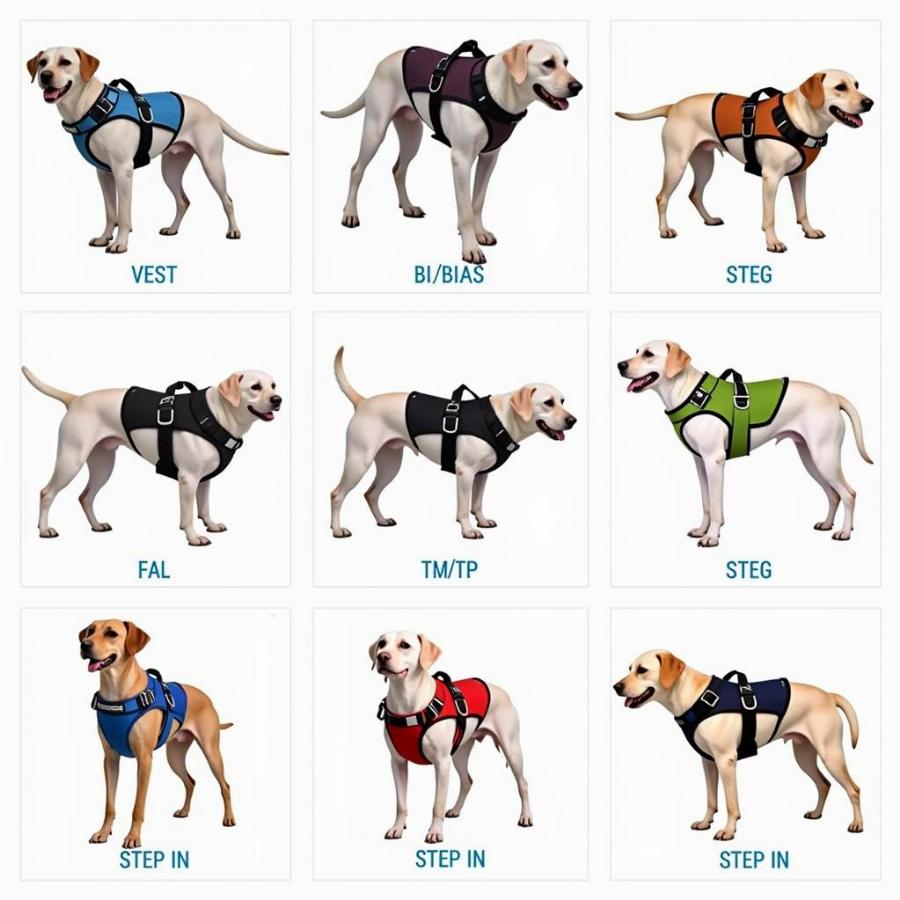Emotional support animals, particularly dogs, play a vital role in providing comfort and stability to individuals facing mental health challenges. An emotional support harness for dogs is a crucial piece of equipment that not only identifies your dog as an ESA but also contributes to their well-being and your peace of mind. Choosing the right harness is a crucial decision, and this guide aims to provide you with everything you need to know about selecting and using an emotional support harness for your furry companion.
Understanding the Importance of an Emotional Support Harness
An emotional support harness clearly distinguishes your ESA from a regular pet, which can be particularly important in situations where pet policies are in place. While it doesn’t grant the same access rights as a service dog vest, it can facilitate smoother interactions and reduce potential misunderstandings in public spaces. Beyond identification, a well-fitted emotional support harness ensures your dog’s comfort and safety during travel or in unfamiliar environments. It also provides better control, minimizing distractions and allowing them to focus on their supportive role.
Choosing the Right Emotional Support Harness for Your Dog
Selecting the appropriate harness involves considering factors such as your dog’s breed, size, and temperament. For smaller breeds, a lightweight and adjustable harness is ideal. Larger, more active breeds might benefit from a more robust harness with added padding and secure fastenings. The harness should fit snugly but not restrict movement or breathing. Look for durable materials that can withstand regular use, and consider features like reflective strips for added visibility during nighttime walks.
Key Features to Look For:
- Clear “Emotional Support Animal” Labeling: Ensures easy identification.
- Comfortable Fit: Adjustable straps and padding for optimal comfort.
- Durable Material: Choose a harness made from sturdy, long-lasting materials.
- Secure Fastenings: Reliable buckles and clips to prevent accidental escapes.
- Reflective Strips: Enhance visibility in low-light conditions.
Training Your Dog to Wear an Emotional Support Harness
Introducing the harness gradually is key to a positive experience. Start by letting your dog sniff and investigate the harness, rewarding them with treats and praise. Gradually introduce the harness for short periods, increasing the duration over time. Associate the harness with positive experiences, such as walks or playtime. Ensure the harness fits correctly, and adjust it as your dog grows. Consistent training will help your dog associate the harness with comfort and security. If you are experiencing issues with dog aggression during walks, consider reading our article on why is my dog aggressive to other dogs on walks.
Where to Purchase an Emotional Support Harness
Emotional support harnesses can be purchased from various online retailers and pet supply stores. Ensure you choose a reputable seller that offers high-quality harnesses that meet the necessary standards. Reading customer reviews can provide valuable insights into the durability and comfort of different harness brands.
 Various emotional support harnesses for dogs
Various emotional support harnesses for dogs
Conclusion
Investing in a high-quality emotional support harness for dogs is an important step in ensuring both your dog’s comfort and your peace of mind. By carefully considering the factors discussed in this guide, you can select the perfect harness that meets your dog’s specific needs and helps them fulfill their supportive role effectively. Remember, a well-fitted and comfortable emotional support harness is essential for your ESA to thrive.
FAQ
- Is an emotional support harness legally required? No, it isn’t legally mandated, but it’s highly recommended for clear identification and management.
- Can any harness be used as an emotional support harness? While any harness can technically be used, a designated ESA harness with clear labeling is preferred for clarity.
- Do I need documentation for my ESA to wear a harness? While a harness itself doesn’t require documentation, having your ESA documentation readily available can be helpful in certain situations.
- How do I clean my dog’s emotional support harness? Follow the manufacturer’s instructions for cleaning. Many harnesses are machine washable.
- What if my dog doesn’t like wearing the harness? Introduce the harness gradually with positive reinforcement and ensure a proper fit.
- Can I use an emotional support harness for my cat? Yes, emotional support harnesses are available for cats as well.
- Where can I find more information about ESAs? Consult with a mental health professional for further information about emotional support animals.
Further Reading and Related Questions
- What are the specific laws on service dogs in california?
- What is the latest sea dogs score?
Expert Insights:
- Dr. Emily Carter, DVM: “A well-fitted harness can significantly impact a dog’s comfort and behavior, especially in stressful situations.”
- Sarah Miller, Certified Dog Trainer: “Positive reinforcement is crucial when training a dog to wear a harness. Patience and consistency are key.”
- Dr. David Lee, Animal Behaviorist: “The emotional support harness serves as a visual cue, helping others understand the dog’s important role.”
Beaut Dogs is your trusted source for all things related to dog care. We provide expert advice and resources to help you navigate the world of dog ownership. For personalized guidance, please contact us via Email at [email protected]. Beaut Dogs is committed to empowering dog owners with the knowledge and support they need. You can also read more about dogs with degenerative myelopathy when to euthanize and spinal cancer in dogs on our website.